RADIANS Function – Degrees to Radians – Excel, VBA, G Sheets
Written by
Reviewed by
Download the example workbook
This Tutorial demonstrates how to use the Excel RADIANS Function in Excel to convert an angle to radians.
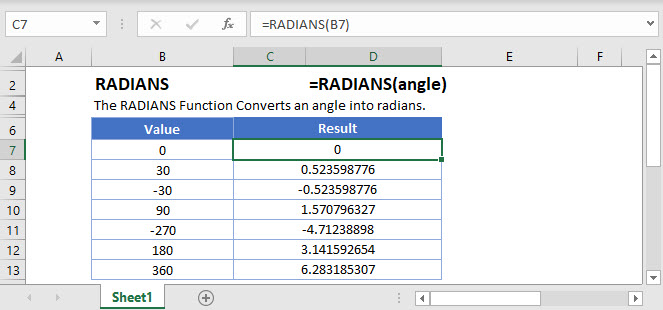
RADIANS Function Overview
The RADIANS Function Converts an angle into radians.
To use the RADIANS Excel Worksheet Function, select a cell and type:
![]()
(Notice how the formula inputs appear)
RADIANS Function Syntax and Inputs:
=RADIANS(angle)angle – An angle in degrees.
RADIANS Function
The DEGREES Function converts radians into degrees.
=RADIANS(45)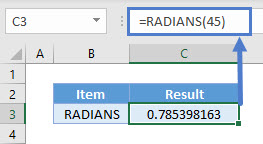
RADIANS & PI Function
The RADIANS Function takes the argument 180 & returns the same result as PI()
=RADIANS(180)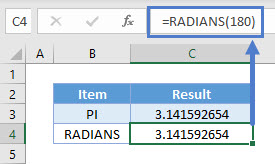
RADIANS Function – Negative Angle
The RADIANS Function can also convert negative angles into radians.
=RADIANS(-270)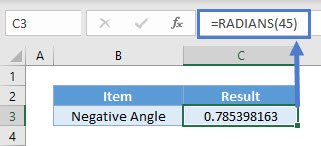
RADIANS in Google Sheets
The RADIANS Function works exactly the same in Google Sheets as in Excel:
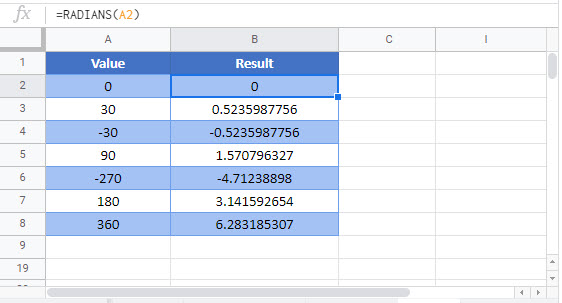
Additional Notes
Use the RADIANS Function to convert an angle into radians.
RADIANS Examples in VBA
You can also use the RADIANS function in VBA. Type:
application.worksheetfunction.radians(angle)Executing the following VBA statements
Range("B2") = Application.WorksheetFunction.Radians(Range("A2"))
Range("B3") = Application.WorksheetFunction.Radians(Range("A3"))
Range("B4") = Application.WorksheetFunction.Radians(Range("A4"))
Range("B5") = Application.WorksheetFunction.Radians(Range("A5"))
Range("B6") = Application.WorksheetFunction.Radians(Range("A6"))
Range("B7") = Application.WorksheetFunction.Radians(Range("A7"))
Range("B8") = Application.WorksheetFunction.Radians(Range("A8"))
Range("B9") = Application.WorksheetFunction.Radians(Range("A9"))will produce the following results
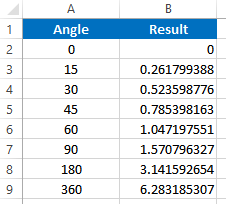
For the function arguments (angle, etc.), you can either enter them directly into the function, or define variables to use instead.
Return to the List of all Functions in Excel


